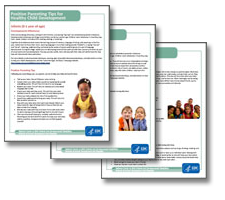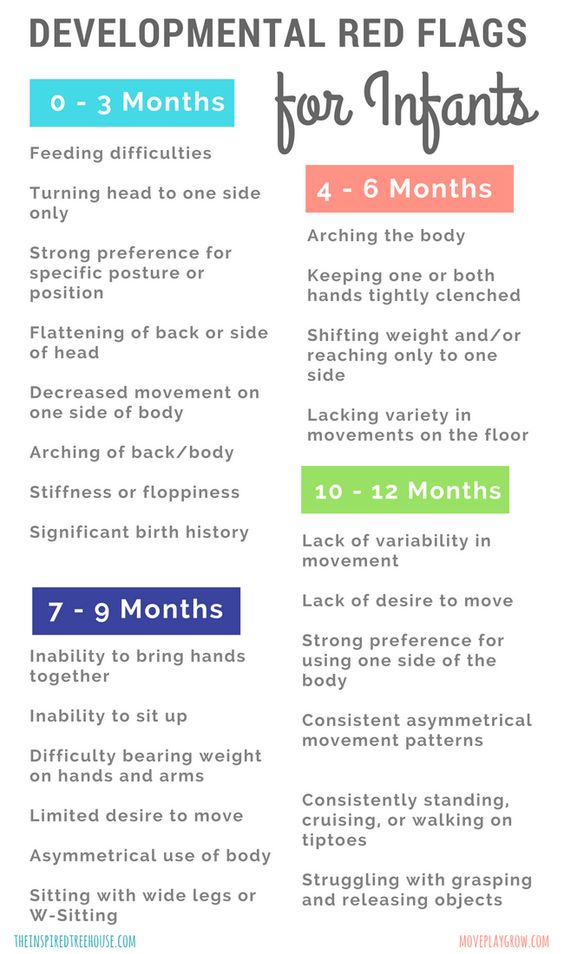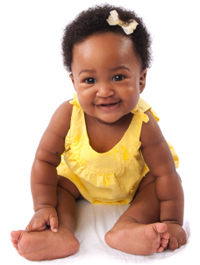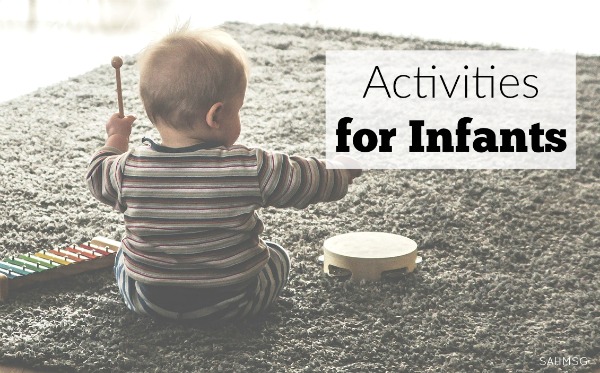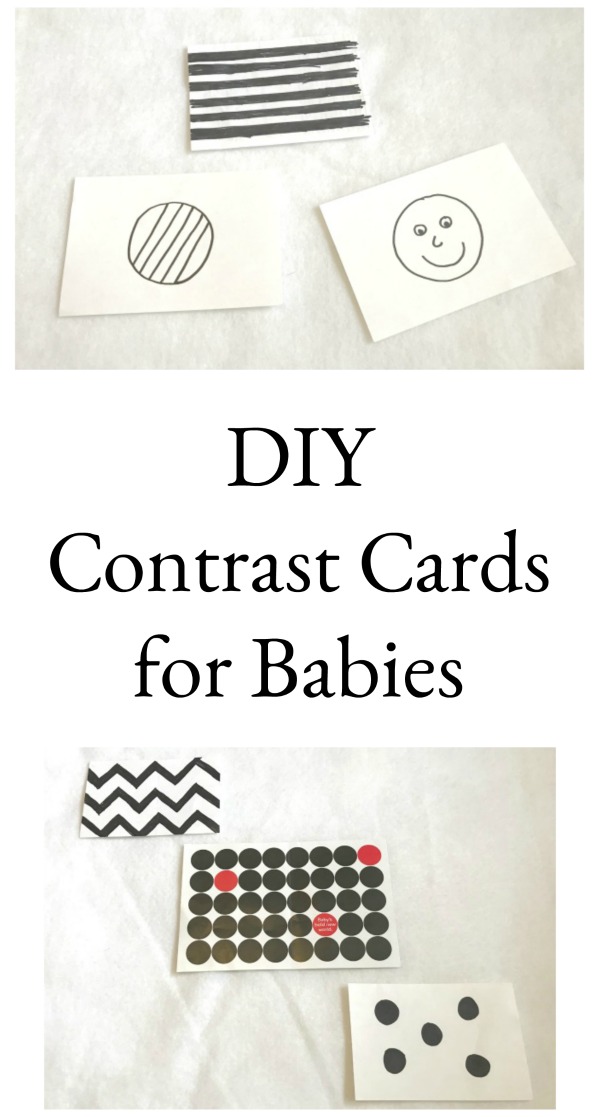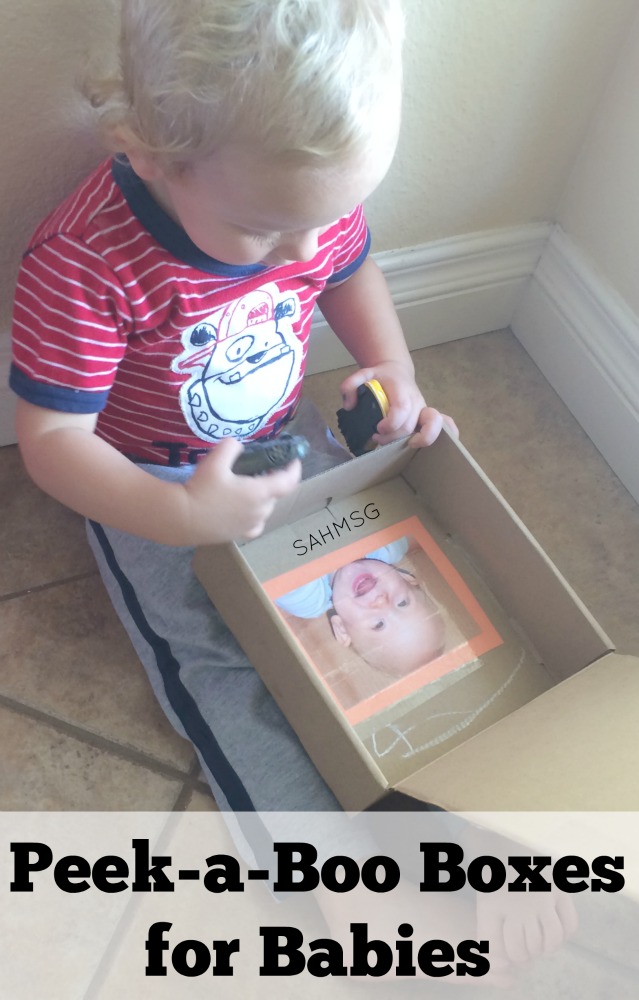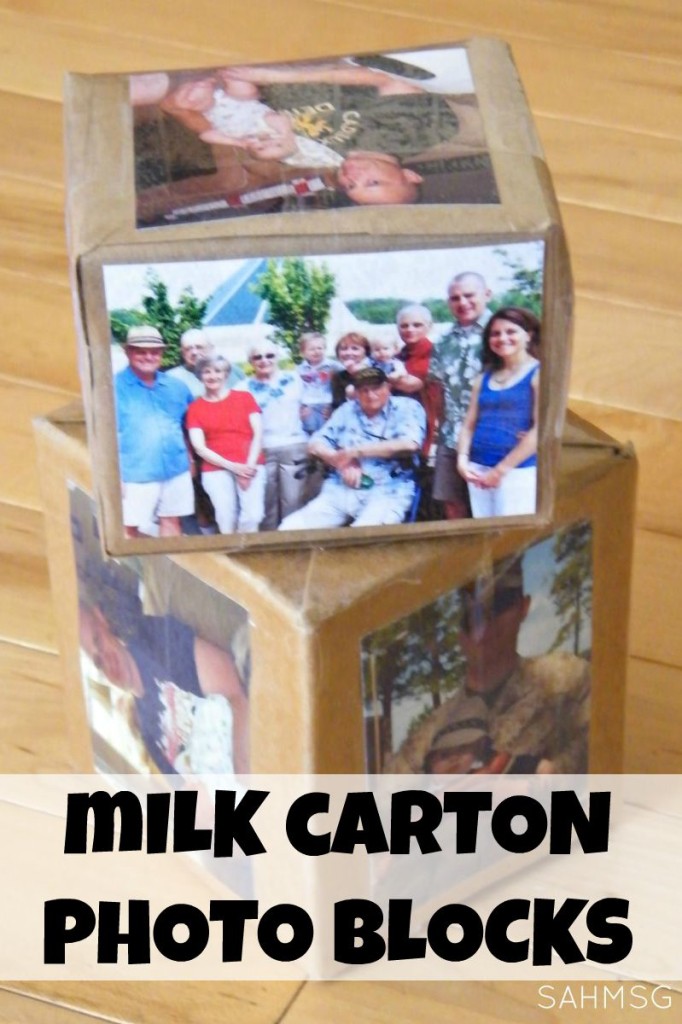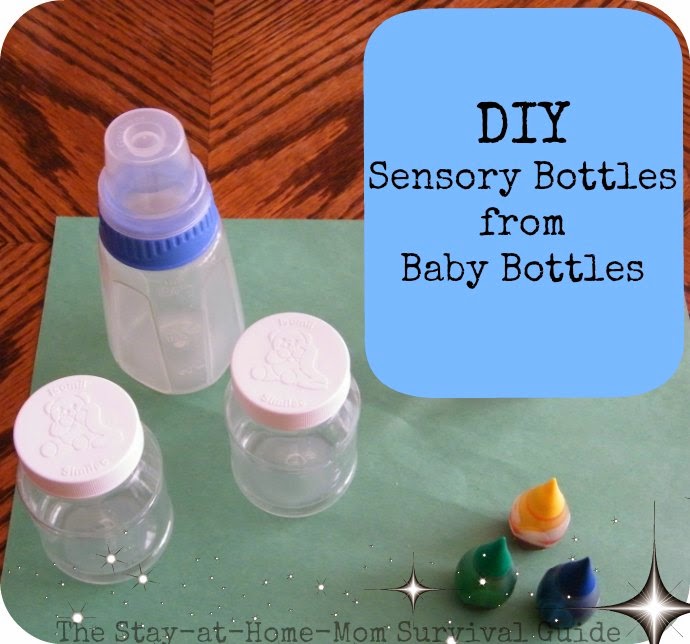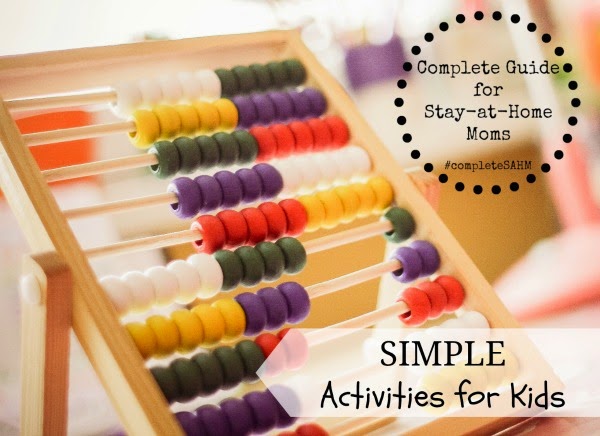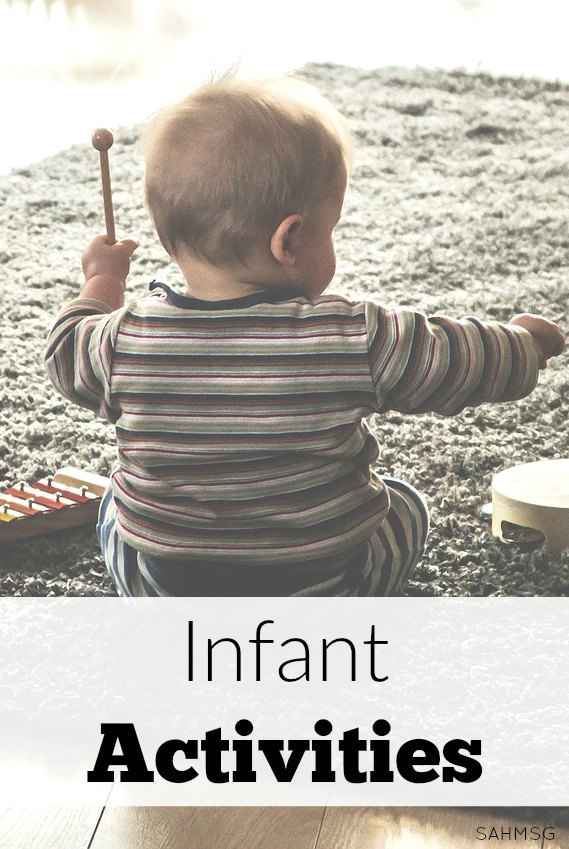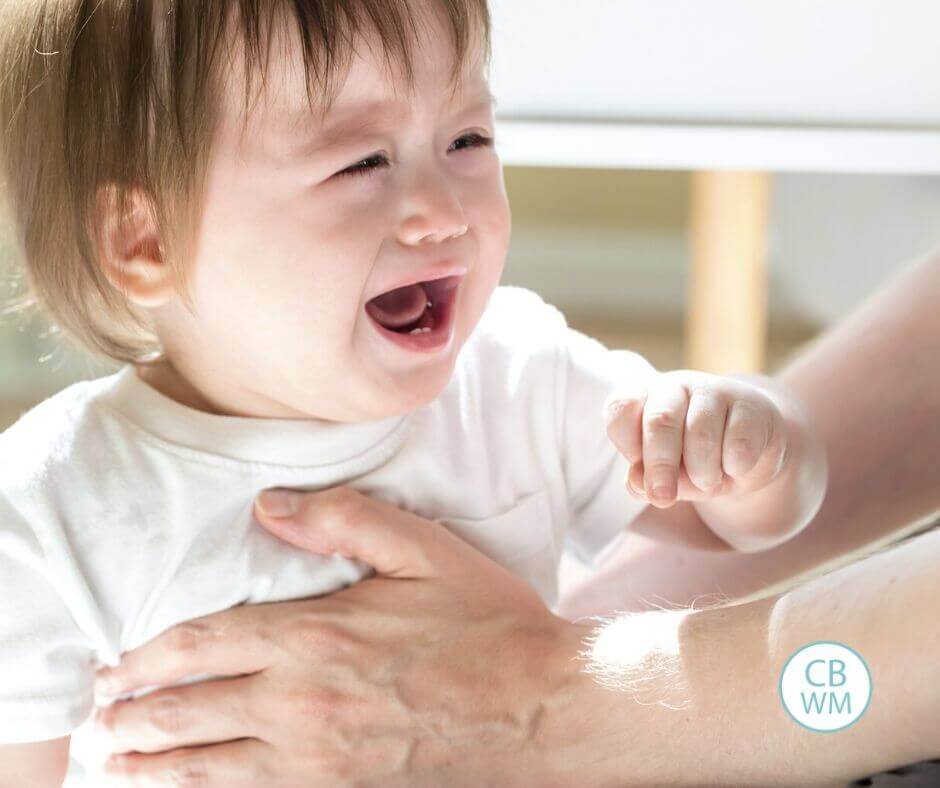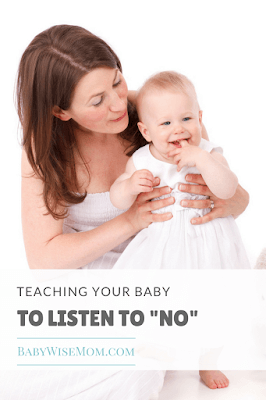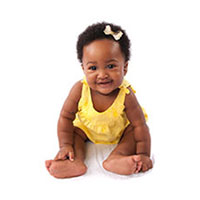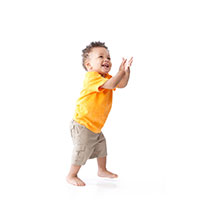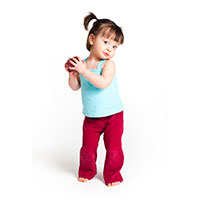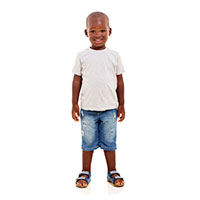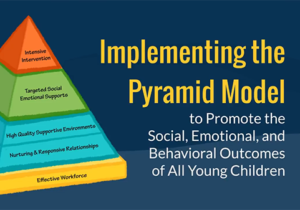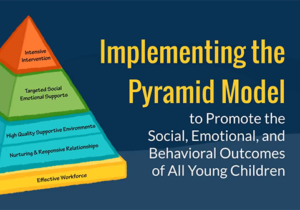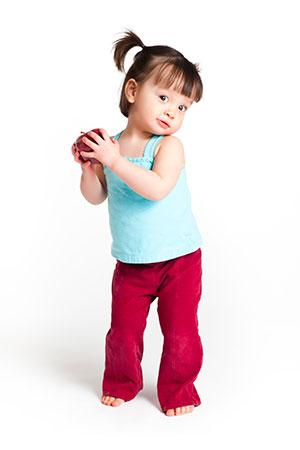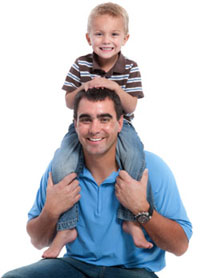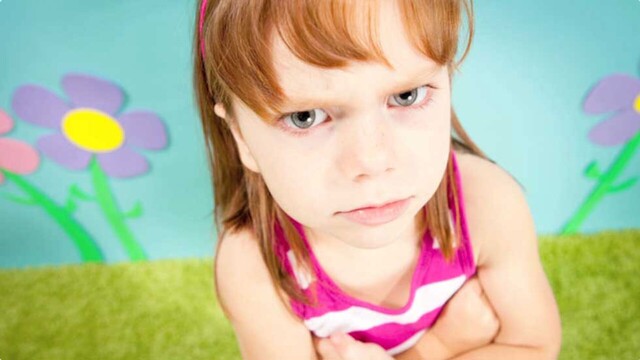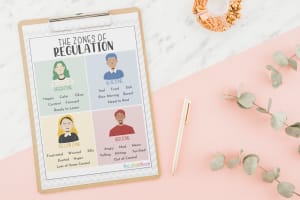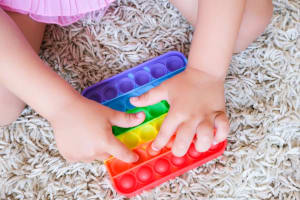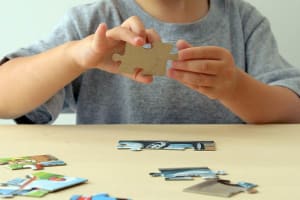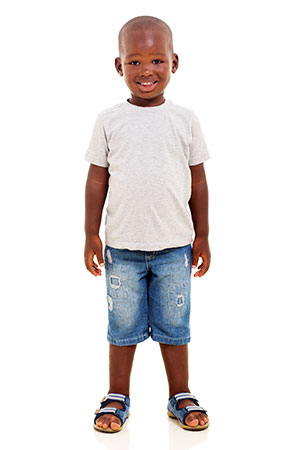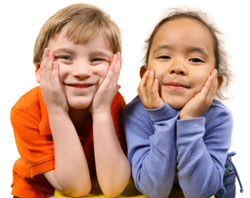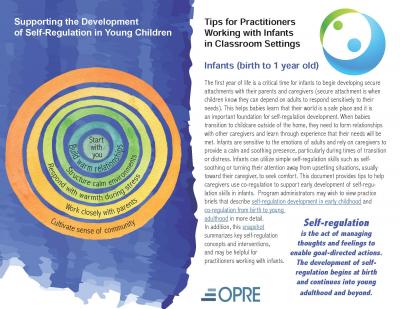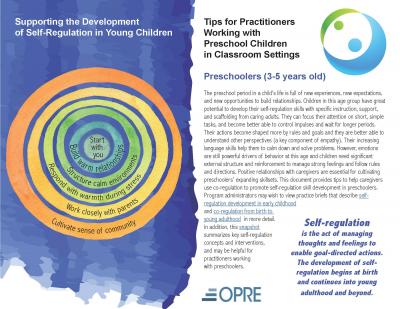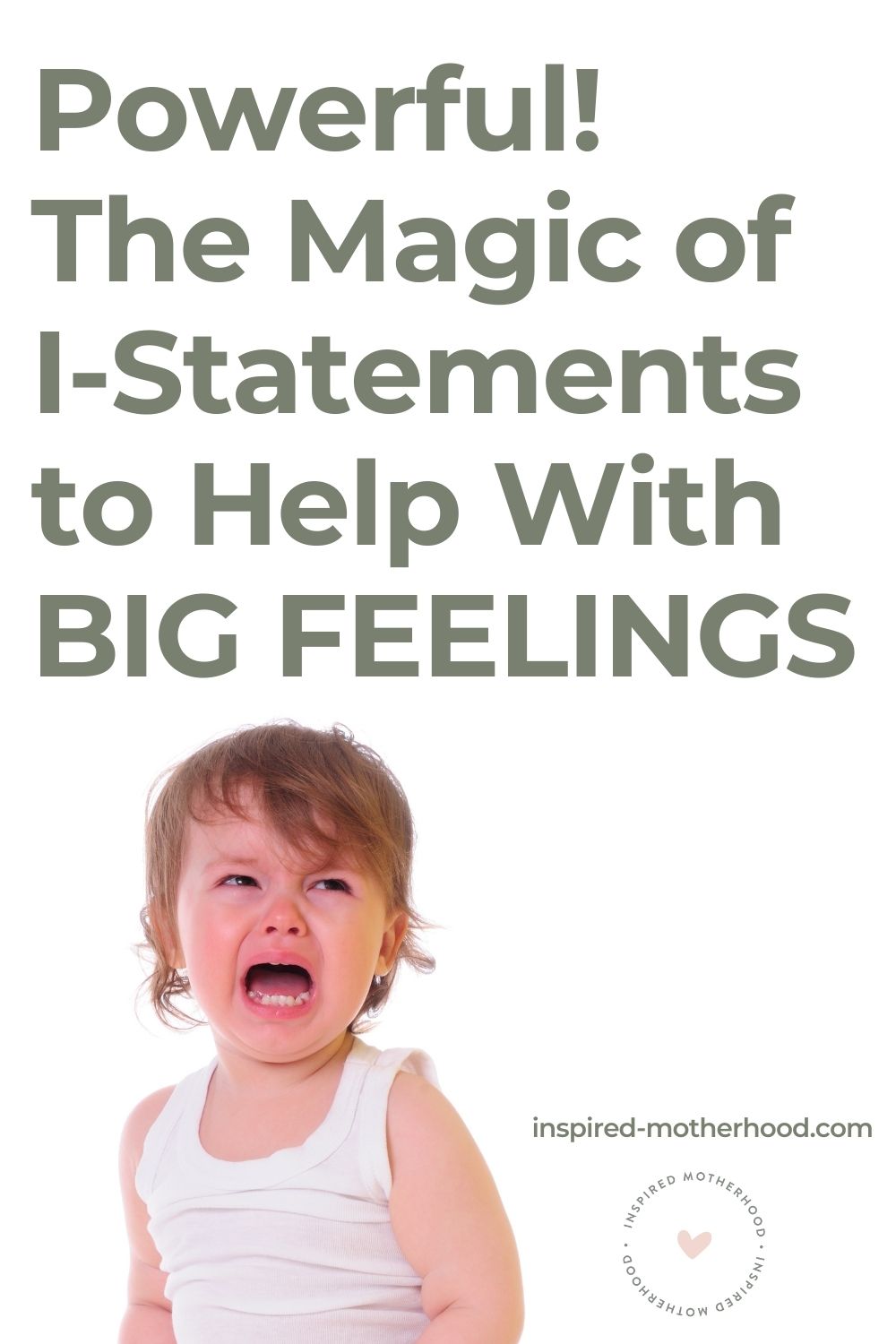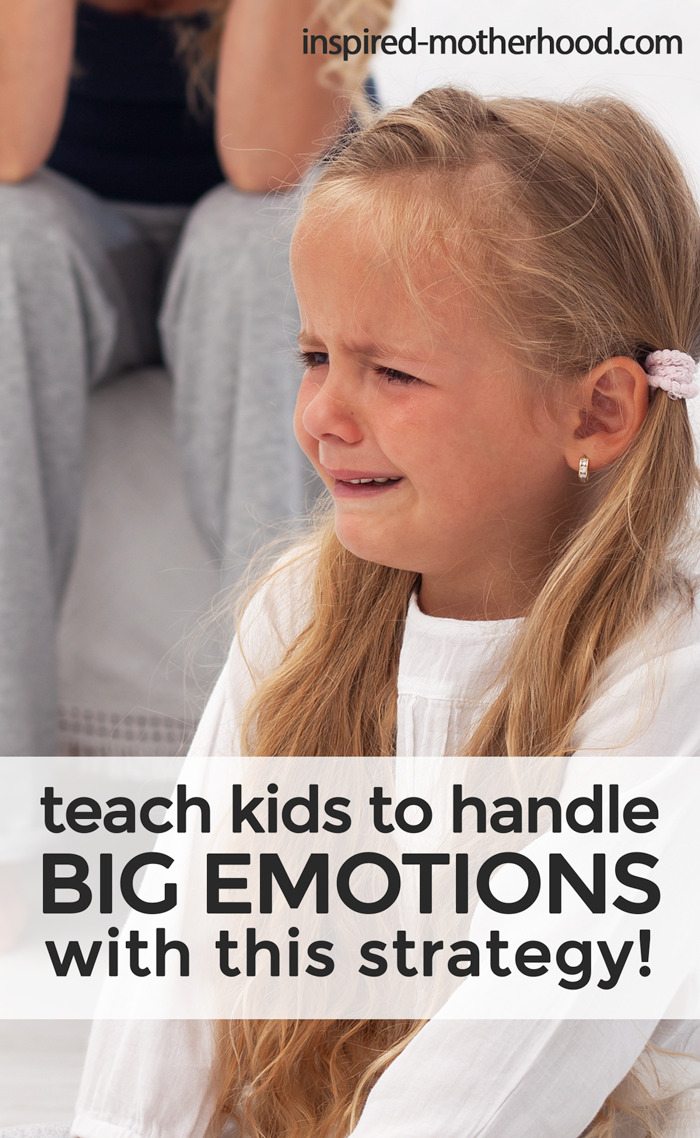Toddlers (1-2 years of age)
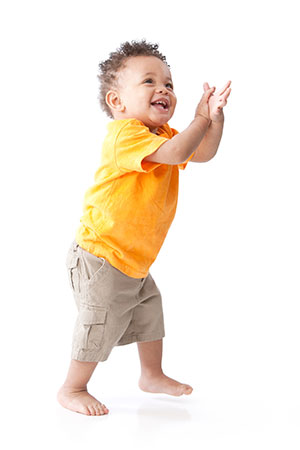
Developmental Milestones
Skills such as taking a first step, smiling for the first time, and waving “bye-bye” are called developmental milestones. Developmental milestones are things most children can do by a certain age. Children reach milestones in how they play, learn, speak, behave, and move (like crawling, walking, or jumping).
During the second year, toddlers are moving around more, and are aware of themselves and their surroundings. Their desire to explore new objects and people also is increasing. During this stage, toddlers will show greater independence; begin to show defiant behavior; recognize themselves in pictures or a mirror; and imitate the behavior of others, especially adults and older children. Toddlers also should be able to recognize the names of familiar people and objects, form simple phrases and sentences, and follow simple instructions and directions.
Positive Parenting Tips
Following are some of the things you, as a parent, can do to help your toddler during this time:
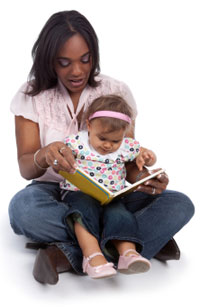
Read to your toddler daily.
Ask her to find objects for you or name body parts and objects.
Play matching games with your toddler, like shape sorting and simple puzzles.
Encourage him to explore and try new things.
Help to develop your toddler’s language by talking with her and adding to words she starts. For example, if your toddler says “baba”, you can respond, “Yes, you are right―that is a bottle.”
Encourage your child’s growing independence by letting him help with dressing himself and feeding himself.
Respond to wanted behaviors more than you punish unwanted behaviors (use only very brief time outs). Always tell or show your child what she should do instead.
Encourage your toddler’s curiosity and ability to recognize common objects by taking field trips together to the park or going on a bus ride.
Child Safety First
Because your child is moving around more, he will come across more dangers as well. Dangerous situations can happen quickly, so keep a close eye on your child. Here are a few tips to help keep your growing toddler safe:
Do NOT leave your toddler near or around water (for example, bathtubs, pools, ponds, lakes, whirlpools, or the ocean) without someone watching her. Fence off backyard pools. Drowning is the leading cause of injury and death among this age group.
Block off stairs with a small gate or fence. Lock doors to dangerous places such as the garage or basement.
Ensure that your home is toddler proof by placing plug covers on all unused electrical outlets.
Keep kitchen appliances, irons, and heaters out of reach of your toddler. Turn pot handles toward the back of the stove.
Keep sharp objects such as scissors, knives, and pens in a safe place.
Lock up medicines, household cleaners, and poisons.
Do NOT leave your toddler alone in any vehicle (that means a car, truck, or van) even for a few moments.
Store any guns in a safe place out of his reach.
Keep your child’s car seat rear-facing as long as possible. According to the National Highway Traffic Safety Administration
it’s the best way to keep her safe. Your child should remain in a rear-facing car seat until she reaches the top height or weight limit allowed by the car seat’s manufacturer. Once your child outgrows the rear-facing car seat, she is ready to travel in a forward-facing car seat with a harness.
Positive Parenting Tip Sheet

Healthy Bodies
Give your child water and plain milk instead of sugary drinks. After the first year, when your nursing toddler is eating more and different solid foods, breast milk is still an ideal addition to his diet.
Your toddler might become a very picky and erratic eater. Toddlers need less food because they don’t grow as fast. It’s best not to battle with him over this. Offer a selection of healthy foods and let him choose what she wants. Keep trying new foods; it might take time for him to learn to like them.
Limit screen time and develop a media use plan for your family.
For children younger than 18 months of age, the AAP recommends that it’s best if toddlers not use any screen media other than video chatting.
Your toddler will seem to be moving continually—running, kicking, climbing, or jumping. Let him be active—he’s developing his coordination and becoming strong.
Make sure your child gets the recommended amount of sleep each night: For toddlers 1-2 years, 11–14 hours per 24 hours (including naps)
For More Information
CDC’s “Learn the Signs. Act Early.” Campaign
For more details on developmental milestones, warning signs of possible developmental delays, and information on how to help your child’s development, visit the “Learn the Signs. Act Early.” campaign website.
CDC’s Parent Information (Children 0―3 years)
This site has information to help you learn how to give your child a healthy start in life.
CDC’s Essentials for Parenting Toddlers and Preschoolers
Learn ways you can help build a safe, stable, and nurturing relationship with your child.
CDC’s Breastfeeding Information
This site has answers to frequently asked questions about breastfeeding.
CDC’s Information on Infant and Toddler Nutrition
Tips for Parents – Ideas to help children maintain a healthy weight.
CDC’s Protect the Ones You Love
CDC’s Injury Center has information on how you can protect your child from drowning and other common causes of injury.
CDC’s Information on Vaccinations
View the immunization schedule for infants and children and find out if your child’s vaccinations are up to date.
1 Year Old Behavior
– The Start of Big Emotions
It finally happened. Your adorable chubby little angel baby has magically transformed into a busy bustling toddler overnight. Ok, maybe it wasn’t magical, and it wasn’t overnight but it sure feels this way. If it’s your last baby, your feels about them turning a year may be all the stronger. And you may be a little anxious about your 1 year old’s behavior. After all, toddlers are feared by most new parents. But fear not, there is so much fun to come. And the behaviors are easy to handle when you know how.
I, personally, think that the second year of a child’s life is an incredible time. Those 1 year old angles are more independent, inquisitive, interactive, but are not quite as tantrumy or willful yet. It’s simply fun watching your young toddler interact with the world and gain new understanding of how things work. So what can you expect in the second year of your child’s life?
Lots of Sensory Play
Allow your 1 year to engage in loud sensory activities. Banging a spoon on the table may seem like an incredibly irritating activity to you, but to your toddler it’s serving so many purposes. There is a cause and effect (spoon on table makes loud noise), sensory experience (the loud noise), social acceptance of behavior (how are parents reacting to this). It’s just amazing.
Same goes for messy eating and playing. LET THEM DO IT!!!!! I can’t stress enough the importance of messy play for your child. The sensory input they get from touching, tasting, and smelling different textures is so important for their development. It allows them to develop curiosity about the world around them. Helps facilitate physical development by improving motor functions. Gives an opportunity to start practicing independent play (which you will want them to do as soon as possible, for your own sake). And lastly – it’s just plain FUN!
Expose Your 1 Year Old To Music
This is so easy and so fun to do. Turn on music when you’re just playing around the house with your child. Play baby tunes for them in order to facilitate some rhyme and sound recognition. Listen to classical music to stimulate their brain. Listen to dance music, hip-hop, country – whatever you’re into. Or just pick up some spoons and start banging on buckets to create a one of a kind melody. Just have fun with it.
Research has shown that music is incredibly beneficial for children’s overall cognitive and socio-emotional development. A study done by the Brain and Creativity Institute at USC found that children who have been involved in formal music training starting at the age of 6, showed a more maturity in their auditory system than their non-musical peers. This is important because a more mature auditory system has the potential for accelerated acquisition of language and reading skills.
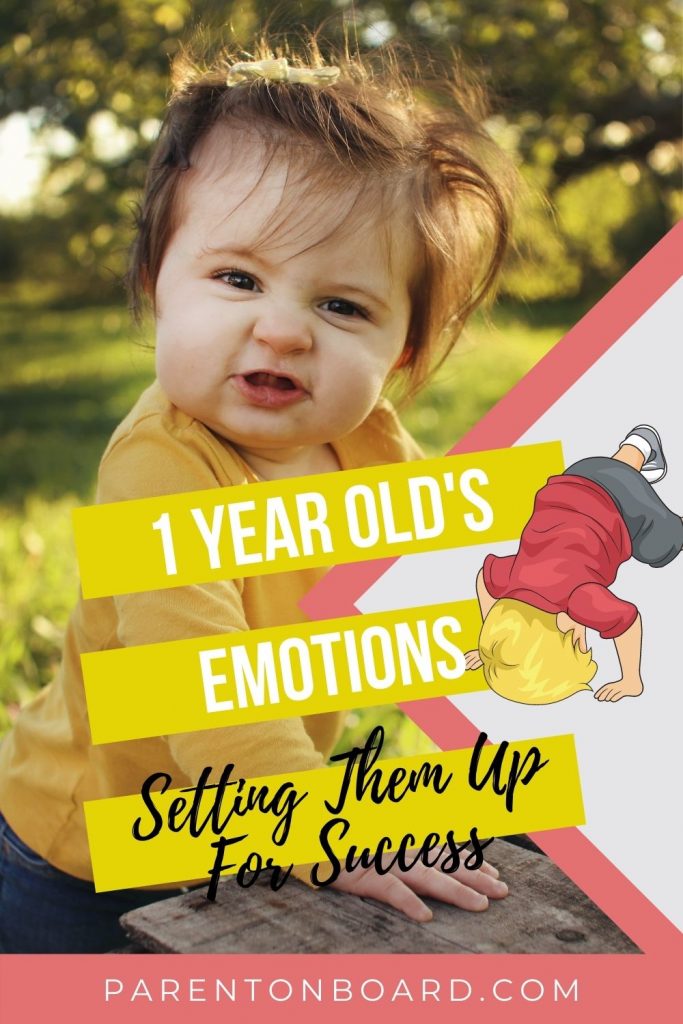
Blow Bubbles Together
Bubbles are by far my favorite activity for a kid of any age. They are an inexpensive way to truly engage your child. Bubbles help them work on blowing skills, which them transfer to things like eating and talking. You can teach cause and effect this way (blow and bubbles form). And your 1 year old ill happily expel some energy by running around or crawling to chase those bubbles wherever they go.
Story Time
Most parents love reading books to their children. It’s a wonderfully calm activity. But it’s also an activity that nourishes our children’s brains and hearts. It’s an opportunity to connect and cuddle, to explore, and to learn.
So, make sure you dedicate at least some of your day to reading books. And don’t get discouraged if your child won’t sit and listen to the book for longer than 30 seconds. It’s ok. They’re little and their attention span is short. Pick bright colored and sturdy books that little hands can explore. I love books with flaps to encourage extra curiosity from my children. Enjoy this wonderful activity together!
How Budding Emotions will Affect Your 1 Year Old’s Behavior
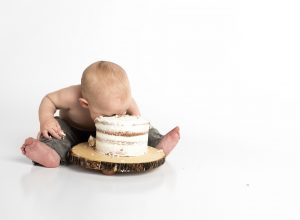
One of the things that your child will be working on this year is figuring out what is socially acceptable. They will test out various behaviors and watch your reactions. So it’s very important to set the stage right for the future.
Food Throwing
For example, kids love throwing food around, and they will watch to see how you react to this behavior. For the most part, when your kid is throwing food – they are either full or really don’t like the food.
Now you have a couple of choices. You can calmly say, “I see you’re throwing food and I think it means you’re ready to play” or if you think they still want to eat say “I see you’re not liking this food, let’s try something else.”
The important thing is to remember not to overreact and not get angry. They are not doing this to spite you. But because they don’t have language yet, this is the only way they can show you what they want or don’t want.
Inappropriate Play
They will also engage in a lot of “inappropriate” play (essentially things they think are fun but you may not). It could be throwing things down the toilet, playing with pet food or water bowls, opening and closing drawers, etc.
They have no malicious intent behind it, they’re just exploring and having fun. So you will need to do a lot of calm correction and redirection. You will need to say “No, we don’t do …….” and then re-engage them in a different activity. Be prepared to repeat it a million times, and don’t expect any adherence to the rules for a while.
Separation Anxiety
Another thing that will creep up this year (if it hasn’t already) is separation anxiety. (If you want to find out more about separation anxiety and how to deal with it, read 5 Ways to Help Your Child Deal With Separation Anxiety).
It may be distressing to you but it’s totally normal. It means your child has a healthy attachment to you and wants you close. What it doesn’t mean, is you needing to run and comfort them the moment they start crying because you left their sight. If you respond that way, they will always cry when you leave because they will expect you to come back right away.
A better way would be to turn and say “There is no need to cry, mommy will be right back”. Or if you are leaving them with a caregiver, just give a quick kiss, say you love them and will be back, then leave. No drama, no lingering, clean exit.
Main Takeaways
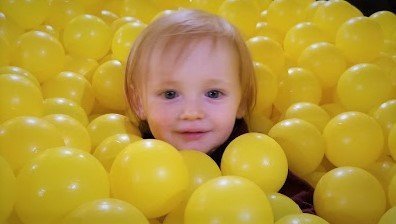
Overall look at this year as a way to set the stage for the future. Practice continuing being in tune with your child (what do they want, what are they trying to express, what can their behavior mean), narrate experiences to them, explain why they can or can’t do something, start teaching them the names of their emotions, practice and grow your empathy skills.
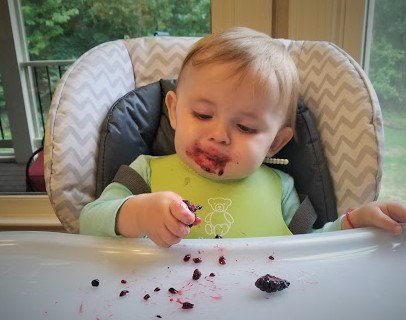
It is such a magical time in their emotional, cognitive and social behavior. Have fun with it, get to know your child better, enjoy them. The 2s will come sooner than you think and a whole other level of patience will be needed.
Supporting the Development of Self-Regulation in Young Children: Tips for Practitioners Working with Families in Home Settings
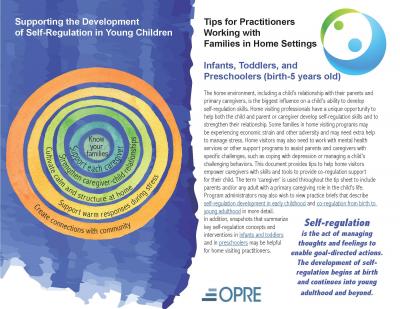
Download Report
File Size: 23,674.09 KB
Pages: N/A
Published: 2019
Introduction
The home environment, including a child’s relationship with parents and primary caregivers, is the biggest influence on a child’s ability to develop self-regulation skills. Home visiting professionals have a unique opportunity to help both the child and parent or caregiver develop self-regulation skills and to help strengthen their relationship.
Purpose
Home visitors can use the tips provided within this document to help caregivers support the specific self-regulation skills their child is developing. This is one of four early childhood practitioner tip sheets. For each of four groups of early childhood practitioners (i.e., those working with infants in childcare settings; those working with toddlers in classroom settings; those working with preschool children in classroom settings; and those working in home settings), these tip sheets provide the following: a review of key concepts related to self-regulation; a listing of the skills developing in that age group; six co-regulation tips for caregivers to support the specific self-regulation skills developing at each age; and specific details within each of the six co-regulation tips. Caregivers can use the tips provided within each resource to support the specific self-regulation skills developing at each age. Most of the material is based on the reports and briefs in the Self-Regulation and Toxic Stress Series (/opre/research/project/ toxic-stress-and-self-regulation-reports) prepared for the Administration for Children and Families (ACF) by the Duke Center for Family Policy and the UNC Frank Porter Graham Child Development Institute.
Highlights
Six sets of tips are provided for practitioners working with families in home settings:Establish a strong relationship with each family.Help caregivers build their own self-regulation capacity.Strengthen and support the caregiver-child relationship.Work with caregivers to cultivate calm and structured home environments that support child development.Help caregivers learn how to respond with both warmth and structure during stressful moments.Provide opportunities for families to build social support connections.
Home visiting work can be stressful. Remember to start with you.
Some families in home visiting programs may be experiencing economic strain and other adversity and may need extra help to manage stress.
Home visitors may need to work with mental health services or other support programs to assist parents and caregivers with specific challenges, such as coping with depression or managing a child’s challenging behaviors.
Citation
Glossary
Self-Regulation:
The act of managing thoughts and feelings to enable goal-directed actions.
Co-Regulation:
The supportive process between caring adults and children, youth, or young adults that fosters self-regulation
Introducing Discipline to Baby
The whats, whens, and hows of disciplining your young child.
When to Start
Discipline, undeniably one of the most important elements of parenting, is also among the most misunderstood, difficult, and anxiety provoking. Jane Nelsen, author of Positive Discipline: The First Three Years, points out that often parents are afraid of being too permissive and they're afraid of being too tough.
Discipline is complicated, especially with babies younger than 2 who don't communicate very well. And it's important to remember that discipline is not a synonym for punishment, Nelsen points out. Discipline is less about playing the tough cop and more about playing the kindly teacher. Here's an approximate time line for introducing routines, rules, and general good behavior.
First Year of Life
0 to 4 months: Pamper your infant
With babies younger than four months, it's important to respond quickly and consistently. This ensures that they stay healthy -- promptly changing wet diapers, for instance, reduces the likelihood of diaper rash. Consistently meeting baby's needs also makes him feel more secure: It shows your baby that you can be relied upon. If you establish this bedrock of trust in infancy, your baby is more likely to accept limits later on.
4 to 6 months: Get in the groove
At this age, parents can begin setting limits. According to the American Academy of Pediatrics, parents should use "generally structured daily routines." If baby can rely on these routines, he's less likely to fuss or struggle. Routines should help calm your baby and encourage him to behave, but should be flexible enough to accommodate his emotions.
Here is an example of a diaper-changing routine:
1. Baby lies down and holds a certain toy.
2. You sing a certain song while changing the diaper.
3. After you're done, he gets a kiss.
You can also establish routines for bathing baby, strapping him into his car seat, and feeding him dinner.
6 to 12 months: Lay down the law
Parents can begin teaching house rules around six months, when the baby starts to comprehend cause and effect. A baby this age can memorize actions and reactions -- when I turn the cup over, the juice pours out -- but she's not yet able to fully control her behavior.
The mantra until then: Be patient and consistent. Though babies under a year old don't understand what "no" means, they do respond to the tone of a parent's voice and can be redirected. In fact, redirection -- also known as distraction -- is the most useful tool from now until age 2. For example, find a toy or move your baby to another room to get her away from the stairs.
Baby in Motion
Any time from 8 months on -- and definitely by baby's first birthday -- he can get himself into trouble. Soon after he's crawling or walking, however, the danger grows. He can suddenly climb up a bookcase, pull out electrical cords, and knock things off a table.
More effective than screaming "Get away from that!" is taking baby to another room while telling him that a chair is for sitting on. While a 3-year-old may understand a lesson in how the chair can fall over and hurt him, such reasoning won't work with a 1-year-old -- that's why distraction is vital.
Set up "activity stations" in areas where there's the most potential for baby to get in trouble -- small boxes of toys in the kitchen, for example. That way baby can be redirected when you are on the phone or trying to fix a meal.
Age 1 and Up
1 to 2 years: Try patience
Now that he's officially entered toddlerhood, you will need to learn new techniques for setting limits.
Toddlers, unlike younger babies, understand some of the explanations for why they can't behave a certain way, but they still aren't able to control themselves. For the child who grabs toys, a parent should distract him with another toy or help him "take turns." The best technique for dealing with tantrums is waiting the child out, remaining calm and firm.
2 and up: Time for a time-out
Concepts such as sharing are puzzling for a child under 3, as are explanations linked to time, such as "You can color when we get back from the store." Your toddler wants to color now! These tricky concepts won't help you distract your toddler, because she doesn't understand them. And because they don't mean much to her, you shouldn't think she's misbehaving, either.
Once a child passes age 2, discipline gets easier. She can finally understand why she shouldn't do something. Parents should begin introducing mild punishments (mainly time-outs) for when the child knowingly behaves badly.
Remember that discipline is a somewhat imperfect art. So don't be too hard on yourself if you find you're saying "no" more than "yes," or punishing your child for a crime he doesn't even understand. Discipline, after all, is about teaching, and parents and kids learn together.
Copyright © 2001 AmericanBaby.com. Updated 2010.
All content here, including advice from doctors and other health professionals, should be considered as opinion only. Always seek the direct advice of your own doctor in connection with any questions or issues you may have regarding your own health or the health of others.
Was this page helpful?
Related Articles
Toddlers 101: Understanding Toddler Development
How to Set Boundaries for Your Baby
How to Practice Positive Discipline at Home
Answers to 11 Common Questions Parents Ask About Potty Training Readiness
Natural Consequences: Redefining Punishments for Kids
The 5 Best Sleep Training Methods (Plus Tips From Parents)
8 Sometimes Frustrating Phases of Baby Development
How to Deal With the 'Terrible Twos'
How to Handle Aggressive Toddler and Preschooler Behavior
6 Early Autism Intervention Activities for Babies
Self-Regulation Snap Shot #1: A Focus on Infants and Toddlers
March 29, 2018
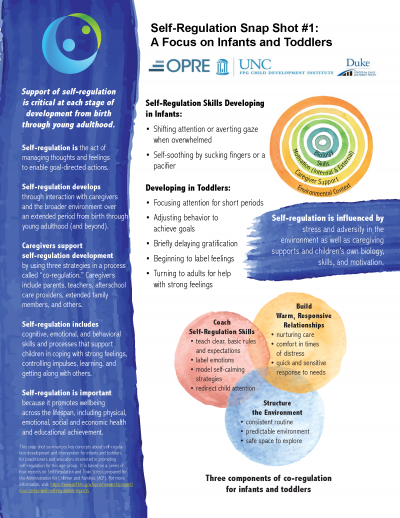
Download Report
File Size: 3,568.84 KB
Pages: N/A
Published: 2018
Introduction
Adult caregivers such as parents, teachers, coaches, and other mentors play a critical role in shaping and supporting self-regulation development from birth through young adulthood through an interactive process called “co-regulation.”
Purpose
This snapshot summarizes key concepts about self-regulation development and intervention for infants and toddlers for practitioners and educators interested in promoting self-regulation for this age group. It is based on a series of four reports on Self-Regulation and Toxic Stress prepared for the Administration for Children and Families (ACF). Visit the Toxic Stress and Self-Regulation Reports page for more information.
Highlights
Self-regulation skills developing in infants:
Shifting attention or averting gaze when over overwhelmed
Self-soothing by sucking fingers or a pacifier
Developing in toddlers:
Focusing attention for short periods
Adjusting behavior to achieve goals
Briefly delaying gratification
Beginning to label feelings
Turning to adults for help with strong feelings
Key considerations for promoting self-regulation in infants and toddlers:
Train teachers and child care staff in co-regulation skills, particularly warm interaction, responsivity to child cues, and environmental structure
Identify ways to support school and child care staff’s own self-regulation capacity
Share self-regulation information, ideas, and classroom approaches with parents/caregivers to support their co-regulation and promote consistency across environments
Glossary
Self-Regulation:
The act of managing thoughts and feelings to enable goal-directed actions.
Co-Regulation:
The supportive process between caring adults and children, youth, or young adults that fosters self-regulation development.
Supporting the Development of Self-Regulation in Young Children: Tips for Practitioners Working with Toddlers in Classroom Settings… the development of self-regulation in young children: tips for practitioners working with toddlers in classroom settings …
Supporting the Development of Self-Regulation in Young Children: Tips for Practitioners Working with Families in Home Settings… the development of self-regulation in young children: tips for practitioners working with families in home settings …
Supporting the Development of Self-Regulation in Young Children: Tips for Practitioners Working with Preschool Children in Classroom Settings… the development of self-regulation in young children: tips for practitioners working with preschool children in classroom …
Introduction
The preschool period in a child’s life is full of new experiences, new expectations, and new opportunities to build relationships. Children in this age group have great potential to develop their self-regulation skills with specific instruction, support, and scaffolding from caring adults.
Purpose
This resource provides tips to help caregivers use co-regulation to support early development of self-regulation skills in preschool children in classroom settings. This is one of four early childhood practitioner tip sheets. For each of four groups of early childhood practitioners (i.e., those working with infants in childcare settings; those working with toddlers in classroom settings; those working with preschool children in classroom settings; and those working in home settings), these tip sheets provide the following: a review of key concepts related to self-regulation; a listing of the skills developing in that age group; six co-regulation tips for caregivers to support the specific self-regulation skills developing at each age; and specific details within each of the six co-regulation tips. Caregivers can use the tips provided within each resource to support the specific self-regulation skills developing at each age. Most of the material is based on the reports and briefs in the Self-Regulation and Toxic Stress Series (/opre/research/project/ toxic-stress-and-self-regulation-reports) prepared for the Administration for Children and Families (ACF) by the Duke Center for Family Policy and the UNC Frank Porter Graham Child Development Institute.
Highlights
Six sets of tips are provided for practitioners working with preschool children in classroom settings:Start with you.Establish a warm and responsive relationship with each child.Create calm and structured childcare environments.Respond with warmth and structure during stressful moments and teach children how to solve problems.Work closely with parents.Create a sense of community.
Preschool children can focus their attention on short, simple tasks, and become better able to control impulses and wait for longer periods.
The actions of preschool children become shaped more by rules and goals and they are better able to understand other perspectives (a key component of empathy).
The increasing language skills of preschool children help them to calm down and solve problems.
Emotions are powerful drivers of behavior at this age and children need significant external structure and reinforcement to manage strong feelings and follow rules and directions.
Positive relationships with caregivers are essential for cultivating preschoolers’ expanding skill sets.
Citation
Pahigiannis, K., Rosanbalm, K. and Murray, D. W. (2019). Supporting the Development of Self-Regulation in Young Children: Tips for Practitioners Working with Preschool Children (3-5 years old) in Classroom Settings. OPRE Brief #2019-29. Washington, DC: Office of Planning, Research, and Evaluation, Administration for Children and Families, U.S. Department of Health and Human Services.
Glossary
Self-Regulation:
The act of managing thoughts and feelings to enable goal-directed actions.
Co-Regulation:
The supportive process between caring adults and children, youth, or young adults that fosters self-regulation development.

